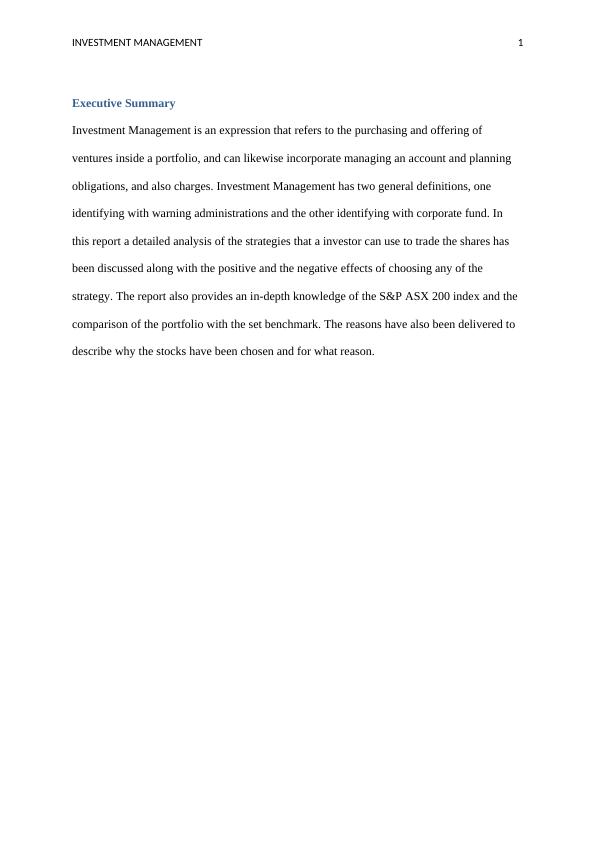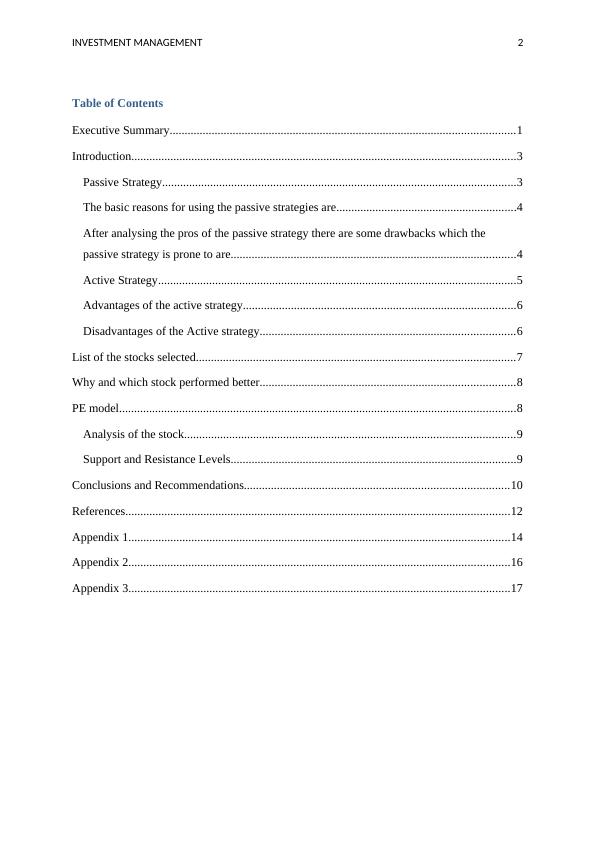Investment Management: Strategies for Trading Shares and Portfolio Analysis
20 Pages3647 Words168 Views
Added on 2023-06-10
About This Document
Investment Management involves purchasing and selling investments within a portfolio, and can include banking, planning, and taxes. This report discusses the strategies for trading shares and portfolio analysis, including the pros and cons of passive and active strategies, and an in-depth analysis of the S&P ASX 200 index. It also provides a list of stocks selected, why and which stocks performed better, and recommendations for holding or selling stocks.
Investment Management: Strategies for Trading Shares and Portfolio Analysis
Added on 2023-06-10
ShareRelated Documents
End of preview
Want to access all the pages? Upload your documents or become a member.
Advantages and Myths of Index Funds for Investment
|3
|917
|317
Assignment on Capital Markets and Investments
|16
|4420
|128
Investment Management Portfolio: Aggressive Portfolio for £2 Million Funds
|6
|1343
|326
Financial Markets and Institutions Assignment
|8
|1907
|33
Finance and Portfolio Construction
|8
|1461
|316
Investment and Portfolio Management | Assignment
|9
|1842
|55




